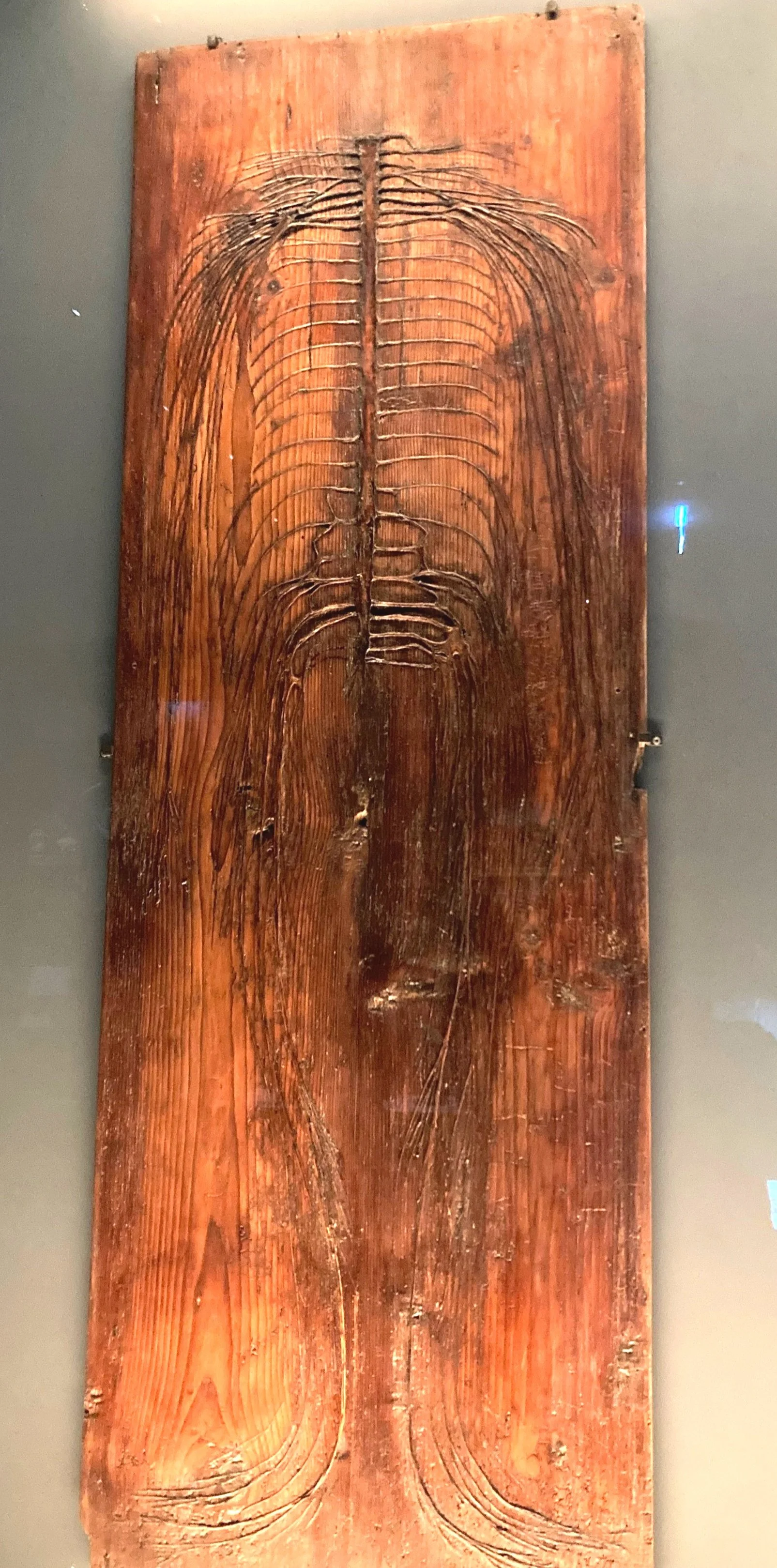The Hunterian Museum at the Royal College of Surgeons, London
Evelyn Tables, dating back to the 1600s, display dissected nerves pasted onto wooden boards.
The Barber Surgeons of London
The Hunterian Museum, located within the Royal College of Surgeons in London, is a small yet impressive museum named after the 18th-century surgeon and anatomist John Hunter and is home to England's largest collection of anatomical specimens. The collection features thousands of items, from Sir Isaac Newton’s death mask and the brain of Charles Babbage - the inventor of the computer, to body parts of all types including syphilic skulls, and even has skin tables adorning the walls of the Museum. The extensive collection takes you on a fascinating journey through the history of surgery from the 17th century to the present day.
The history of surgery however dates back much further than the 17th century. Early surgeons in England were known as The barber-surgeons who officially formed themselves into the Guild of the Barber Surgeons in the year 1540. These were the people to see for all your grooming and medical needs of the day. As barbers were known to be skilled with sharp instruments, it made sense to extend their scope of practice to include procedures such as bloodletting, dental extractions, bladder stone removals, and even amputations.
The barber-surgeons were viewed as tradesmen, different from the real doctors, and would do all the jobs that the physicians wouldn't touch. They promoted themselves with the red and white striped pole of the barbers still in use today which was thought to symbolize the blood and bandages associated with their trade. Aside from the services they offered, they were known for their public dissections and were legally granted the bodies of four executed criminals per year on which to practice their skills, although many more cadavers were acquired through other means.
The Barber-Surgeons Guild continued until the year 1745, when the surgeons separated from the barbers to form the Company of Surgeons, and later, the Royal College of Surgeons that they are known as today. However, the barber-surgeon roots continue to influence the profession to this day. When a doctor becomes a member of the College of Surgeons, they no longer use the title 'Dr.' Instead, they are referred to as 'Mr.' or 'Mrs or Ms once again, thus distinguishing themselves from physicians and reflecting their tradesman heritage.
‘Bodysnatching’ by Thomas Rowlandson, 1775 on display at the Hunterian Museum
Bodies, bodies, bodies!
The Hunterian Museum holds over 3,000 human anatomical specimens within its collection, including an array of preserved organs, human fetuses as well as skeletons showcasing all sorts of pathology. Who did they belong to? And how did they manage to become a part of an anatomy museum in London?
The majority of the specimens in the museum originate from John Hunter's collection, who acquired them through various means during his long career. Bought at auction, preserved after surgical removal, and dissected from the dead, all methods used by John Hunter to add to the collection.
His collection included body parts from his private patients, as well as those of his close friends and family, including his father-in-law! The collection also features notable figures of the time, such as generals, prime ministers, and the even the Archbishop of Canterbury. Poorer patients were not exempt either; in exchange for treatment during their lives, they agreed to donate their bodies upon their death.
Bodies were often bought at actions or sold by friends and family of the deceased. The Irish Giant, otherwise known as Charles Byrne whose skeleton is on display at the museum, was sold by his friends upon his death to John Hunter for 130 pounds.
More gruesomely, some of the specimens came from dissections of cadavers from grave robbers, dug up following their death, or from criminals taken for dissection after their execution. In 18th-century London, when people could be executed for just about anything, this was an easy source of cadavers. However getting the bodies was often problematic, as the execution site was heaving with people who would run off with the bodies!
Jonathan Wild, an 18th-century gang leader was executed in 1725 for his crimes. He managed to escape the surgeons for a time by secretly being buried following his execution, only to be dug up later by grave robbers and sold to the barber-surgeons for dissection. His skeleton is still on display at the Museum to this day.
The only one not in this museum it seems is John Hunter himself, though he did try. He left instructions for his body to be dissected and his Achilles tendon and heart to be preserved. However, the anatomist left in charge of the task failed miserably to preserve anything. His remains instead now lie in Westminster Abbey rather than in jars in his collection.
‘The Reward of Cruelty’ by William Hogarth, 1750 on display at the Hunterian Museum
Top Tips
Admission is free, though they recommend pre-booking to avoid the queues via the link below. There is a cafe and a great little souvenir shop in the museum at the end.
https://hunterianmuseum.org/visit/book-advanced-ticket
There is a curator tour lasting approximately 30 minutes every Wednesday at 2:15 pm, first come first serve by booking at the reception on arrival.
Open Tuesdays to Saturdays 10 am-5 pm.
Getting there: the closest tube stations are Holborn and Temple.
Address: Royal College of Surgeons of England, 38–43 Lincolns Inn Fields, London, WC2A 3PE


